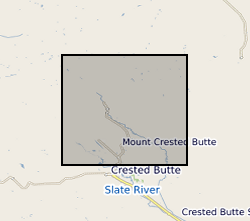Dissolved rhenium and other dissolved ions in Alpine catchments of the Erlenbach and Vogelbach (Switzerland) and the East River (Colorado, USA) (NERC Grant NE/I001719/1)
The measurements and data contained here were obtained to study the chemical weathering of sedimentary rocks, and more specifically the oxidation of rock organic carbon and the associated release of CO2. The primary aim was to better understand the production and mobility of the trace element rhenium during weathering, because this element has been proposed as a proxy for rock organic carbon oxidation. The study focused on three Alpine catchments that drain sedimentary rocks, which all experience moderate to high erosion rates where oxidative weathering rates are thought to operate faster. Two catchments were located in Switzerland - the Erlenbach and Vogelbach, and one catchment in Colorado, USA - the East River. To study chemical weathering and the production and mobility of rhenium, a suite of samples were collected to capture the source and products of weathering reactions. These focused on stream and river water, river sediments and weathering profiles collected on sedimentary rocks. The Swiss catchments, water samples were collected from 2011 and 2012 to capture changes in river flow and seasonal changes in hydro-climate. Samples were collected from a gauging station operated by the Swiss Federal Institute for Forest, Snow and Landscape Research - WSL. In the East River, samples were collected from the gauging station operated by the Lawrence Berkeley National Laboratory Watershed Function Scientific Focus Area from 2015 and 2016. Additional samples included snow samples collected from the Erlenbach. All water samples were analysed for their major dissolved ion content by Ion Chromatography. Dissolved rhenium concentrations were determined by High Resolution and Quadrupole Inductively Coupled Plasma Mass Spectrometry. Solid samples were digested and analysed for Re content by ICP-MS. These geochemical measurements were paired with water discharge data to quantify the flux of dissolved elements, using rating curves and flux-weighted average methods, and interpret the hydrological context of ion production and mobility through the landscape. This new data acquisition was funded by a European Research Council Starting Grant to Robert Hilton (ROC-CO2 project, grant 678779) and a Natural Environment Research Council (NERC), UK, Standard Grant (NE/I001719/1). Further details of subsequent data analysis and interpretation can be found in Hilton, R.G., et al., 2021, Concentration-discharge relationships of dissolved rhenium in Alpine catchments reveal its use as a tracer of oxidative weathering, Water Resources Research

dataset
:
http://data.bgs.ac.uk/id/dataHolding/13607823
English
Geoscientific information
GEMET - INSPIRE themes, version 1.0:
BGS Thesaurus of Geosciences:
NGDC Deposited Data
Ions
Trace metals
Rhenium
Geomorphology
Oxidation
Hydrology
Chemical weathering
Weathering
Free:
Free:
NERC_DDC
-107.0500,
38.8800,
-106.8800,
39.0300
8.7000,
47.0400,
8.7200,
47.0800
CH, CHE, COLORADO [id=794000], SWITZERLAND [id=302000]
creation: 2021-10-12
2011-08-02
-
2016-09-30
vector
University of Oxford
Robert Hilton
Department of Earth Sciences, South Parks Road Oxford,
Oxford,
OX1 3AN
email:
not available
Role: originator
University of Durham
Mathieu Dellinger
email:
not available
Role: originator
British Geological Survey
Enquiries
email:
not available
Role: distributor
British Geological Survey
Enquiries
email:
not available
Role: point of contact
Data Quality
Water samples were collected and filtered through 0.2micron filters and refrigerated prior to analysis. Major ion concentrations were determined by Ion Chromatography and rhenium concentrations by ICP-MS. Solid samples (river bed loads, weathered shale) were ground and digested using HF and HNO3. Rhenium concentrations were determined by ICP-MS. Precision and accuracy assessed by parallel digestion and analysis of a number of in-house and international certified standards, which included standards with similar matrix to those analysed here (sedimentary rocks). Dissolved ion data was plotted with water discharge and power law fits were used as rating curves. Fitting was done in Origin Pro using least squares regression. Power law fits and uncertainties on pre-factor and exponents were applied to water discharge records to quantify flux. A flux-weighted average method was also used.
INSPIRE Implementing rules laying down technical arrangements for the interoperability and harmonisation of Geology
Commission Regulation (EU) No 1089/2010 of 23 November 2010 implementing Directive 2007/2/EC of the European Parliament and of the Council as regards interoperability of spatial data sets and services
Constraints
The copyright of materials derived from the British Geological Survey's work is vested in the Natural Environment Research Council [NERC]. No part of this work may be reproduced or transmitted in any form or by any means, or stored in a retrieval system of any nature, without the prior permission of the copyright holder, via the BGS Intellectual Property Rights Manager. Use by customers of information provided by the BGS, is at the customer's own risk. In view of the disparate sources of information at BGS's disposal, including such material donated to BGS, that BGS accepts in good faith as being accurate, the Natural Environment Research Council (NERC) gives no warranty, expressed or implied, as to the quality or accuracy of the information supplied, or to the information's suitability for any use. NERC/BGS accepts no liability whatever in respect of loss, damage, injury or other occurence however caused.
Available under the Open Government Licence subject to the following acknowledgement accompanying the reproduced NERC materials "Contains NERC materials ©NERC [year]"
licenceOGL
Metadata about metadata
ce3adf99-45a7-29ca-e054-002128a47908
British Geological Survey
Environmental Science Centre,Keyworth,
NOTTINGHAM,
NG12 5GG,
United Kingdom
tel: +44 115 936 3100
email:
enquiries@bgs.ac.uk
Role: point of contact
2024-04-24
